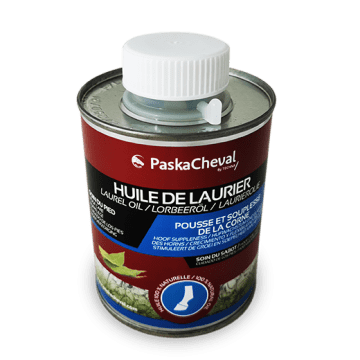Foals grow very quickly during the first year of their lives, and any stance defect can quickly become a problem for their overall development. It is therefore essential to carry out regular hoof care from an early age. Our experts’ advice.
Why care for your foal’s hooves?
Foaling is a key step in a foal’s life. To ensure the broodmare is not injured during foaling, the foal’s hooves are wrapped in a perioplic membrane. This then disappears as the horn grows, as a result of drying and wear.
At birth, a foal can present a number of deformities. For example, it is not unusual to see foals with a fetlock joint touching the ground. This is known as tendon laxity. This deformity is generally due to the foetus’ position during gestation and resolves without difficulty when the foal is given the right food supplements and properly monitored. However, deformities do not always resolve with time. Specific hoof trimming, or even special shoes, may sometimes be required to solve the problem.
Regular hoof care enables monitoring of the foal’s stance problems and correcting them before they become incapacitating. Likewise, hoof problems (frog thrush, development of white line disease, vertical fissures, etc.) need to be prevented during this growth phase. Otherwise, the overall development of the foal’s locomotor system may be disrupted.
How to care for your foal’s hooves
Observation must begin from the time the foal is born and continue throughout its growth.
If there are no particular deformities, the first hoof trimming takes place at around the age of 4 to 6 weeks. Depending on the season, where the foal lives, and its hoof and stance development, maintenance trimming is performed every 6 to 8 weeks.

The use of ointments helps keep the hoof in good condition. During the wintertime, in wet areas, black ointment can be used to nourish the hoof and prevent the horn, sole and frog from softening. Cod liver and laurel oil-based ointments promote horn suppleness and growth. It is very important to prevent the development of vertical fissures. These cracks in the hoof horn can be very problematic if they are complete (from the perioplic ring to the white line). These fissures can lead to the development of “seedy toe” or white line disease. This is the development of fungus and/or anaerobic bacteria inside the hoof horn. This problem causes the flesh to rot and is very slow to heal. The regular use of reparative lanolin and beeswax-based balm helps reduce the risks of developing this type of problem.
To grow and develop harmoniously, a foal needs to have sound hooves. Regular and attentive hoof care helps prevent locomotor problems. Find our full range of Paskacheval required for this hoof care at your nearest distributor.
Where to find Paskacheval products?
Find your nearest sales outlet
Paskacheval is a range of plant-based feed supplements and external care products designed to enhance the performance and well-being of every horse.





